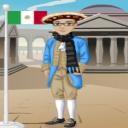Yahoo Answers is shutting down on May 4th, 2021 (Eastern Time) and beginning April 20th, 2021 (Eastern Time) the Yahoo Answers website will be in read-only mode. There will be no changes to other Yahoo properties or services, or your Yahoo account. You can find more information about the Yahoo Answers shutdown and how to download your data on this help page.
Trending News
7 Answers
- OPsaltisLv 79 years agoFavorite Answer
Orthodox Christians are often (bit, but not overly simplistically) characterized as those Christians in communion with the Patriarch of Constantinople, and not with the Church of Rome. The Church is called variously the One Holy Catholic and Apostolic Church, the Eastern Orthodox Church, the Orthodox Christian Church, or simply the Orthodox Church. It is made up of people of identical faith in numerous national expressions, such as Russian, Serbian, Syrian/Antiochian, Greek, etc.
We hold to the ancient Christian faith, as expressed in the Nicene Creed (without Rome's unauthorized addition of the infamous filioque "and the Son" clause). Since Rome was in communion with the core churches of the Eastern Orthodox for over 1000 years, there are many similarities in church organization and worship patterns.
The Church's one head is Christ. We have no single temporal "vicar of Christ", but our bishops maintain fellowship and continuity of faith through their meetings. The Patriarch of Constantinople is these days the "first among equals", a position Rome once held until its departure from our fellowship.
We hold the seven major sacraments as being essential to the faith:
Baptism, chrismation ('christening"), repentance/confession, marriage, holy orders (priesthood, etc.), communion, and holy unction (anointing of the sick -- not "last rites").
Our aim in this life is to be restored to fellowship with God through faith in Jesus Christ, the reception of God's grace in the sacraments, and the continual laying off of sin in repentance.
Blessings.
/Orthodox
About Orthodox Christianity: http://www.goarch.org/ourfaith/introduction
http://www.antiochian.org/discover http://saintnicholas.ucoz.com/index/intro_to_ortho...
Source(s): http://www.goarch.org/ourfaith/ourfaith7105 - The Sacraments - The CarmeliteLv 69 years ago
With a small "o", orthodox simply means right teaching. With a capital "O", it refers to those Christian Churches who, like Catholicism, were founded by the apostles but they are not in communion with Rome. Together the various groups account for more than 100 million in number with the Russian Orthodox Church alone claiming some 90+ million.
The six Oriental Orthodox Churches also have a different type of Christology in that they believe that Jesus' humanity was largely absorbed into his divinity -- while the ancient Arians believed that Jesus was human but not divine. These 6 (Ethiopian Orthodox, Eritrean Orthodox, Coptic, Armenian, Syrian Orthod and Syro-Malabar churches) are not in communion with the autocephalous and autonomous Orthodox Churches. They are considered to by Monophysite (Jesus had one nature -- not two) and their "leader" (for lack of a better word) was the monk Eutyches....so it is also known as Eutychianism -- a good research topic. P.S. Catholics -- and most Protestants -- believe that Jesus was dyophysite -- having two natures...human and divine. These were never mixed together without one being absorbed into the other.
- By FaithLv 79 years ago
Eastern orthodox is the branch of sacramental Christianity which broke off from the Roman Catholic Church in 1054 A.D.
HISTORY: Until 1054 the Eastern and the Roman were two branches of the same sacramental body. The division began when the Roman emperor Constantine moved his capital from Rome to Constantinople in 330 A.D. Powerful church leaders claimed authority over large regions and were vying for supremacy. There was the bishop of Rome in the West, and four patriarchs in the East. The main point of contention between the eastern and the western divisions was the papacy. More important than doctrine was the issue of power and authority. The Eastern Orthodox rejected the pope, while retaining Rome's sacramental system and most of Rome's unscriptural doctrines.
"The division of the Orthodox Church into the Western and Eastern--Roman and Constantinople--began with the division of the Roman Empire in the late 4th century A.D. Toward the end of the 9th century the dialogue between the Papacy and the Patriarchate became much sharper: it was at that time that Bulgaria was baptised and an argument broke out between Rome and Constantinople over the patronage of the new Christian country. ... In 1054 there was a formal break between the Western (Roman) and Eastern (Orthodox) church when Pope Leo IX and Michael Caerularius, Patriarch of Constantinople, anathematised each other. This signified a formal split" (A Millennium of Russian Orthodoxy, pp. 20-21).
The Roman Catholic Church and its twin, Eastern Orthodoxy, were formed by a spiritually adulterous relationship between the political empire and apostate church leaders. The latter claimed authority over the Lords churches and amalgamated pagan practices with New Testament truth to form an impure form of Christianity. This explains the origin of such unscriptural practices as the mass, purgatory, sacraments, prayers to and for the dead, consecrated buildings, Mary worship, scapulars, and the rosary. Eastern Orthodoxy has its roots in this same apostasy.
Roman Catholicism and Eastern Orthodoxy both claim direct descent from Christ and the Apostles, but that this claim is bogus is evident in their non-apostolic doctrines and practices. As a result of the split with Rome, Eastern Orthodoxy is not united under one head. There are many groupings of Orthodox, all having the same basic doctrine and practice with some minor variation: Russian Orthodox, Albanian Orthodox, Syrian Orthodox, Ukrainian Orthodox, Bulgarian Orthodox, Romanian Orthodox, Serbian Orthodox, Antiochian Orthodox, etc. Though not united under a world headquarters, these groupings are united separately into episcopal councils, over which a bishop rules. Also, each group is in turn in formal relationship with the Patriarch of Constantinople, who presides over all the Eastern Orthodox churches. "No one patriarch is responsible to any other patriarch; yet all are within the jurisdiction of an ecumenical council of all the churches, in communion with the patriarch of Constantinople, who holds the title Ecumenical Patriarch" (Handbook). From a biblical perspective, there is little difference between the ecclesiology of Roman Catholicism and that of Eastern Orthodoxy. Both incorporate an unscriptural form of church government through which a intra-church bureaucracy lords over the local assembly.
Orthodoxy preaches a false gospel. According to Orthodox teaching, baptism (even of infants) is the means whereby an individual is born into Christ and becomes a Christian. This false gospel is cited from one of their own publications:
"Baptism is a new birth. It is being born to the life made new by our Lord Jesus Christ. It means to be alive in Christ. ... Through Holy Baptism all become Christ's. We become Christians and have the opportunity to inherit God's Kingdom. Why in the world would any parents who claim to be Christians want to put off making their offspring Christians as soon as possible? Don't they want their infants to share in the Kingdom of God? The baptized one becomes a member of Christ's body--His Church" (One Church, Russian Orthodox Church, 1981).
The Orthodox Church also advocates prayers to and for the dead, and the false, wicked idea that the living can aid in the salvation of the deceased through good works:
"But the soul of the deceased is aided by the prayers of the Church, of all those who knew and loved him, and also by acts of charity carried out for his sake. By doing good works for the sake of those who are dead, we are, as it were, completing what they left undone, paying their debts and offering our own sacrifice to the Merciful Lord on their behalf" (The Journal of the Moscow Patriarchate, No. 10, 1976).
In the Journal of the Moscow Patriarchate, No. 4, 1980, we find the following false teachings about Mary, salvation, and the Lord's Supper:
Source(s): "When one asserts his faith in the Son of God, the Son of the Ever Virgin Mary, the Mother of God [note the false Catholic doctrines that Mary is the Mother of God and a perpetual virgin, meaning that she had no other children after Jesus], he accepts first of all the words of faith into his heart, confesses them orally, sincerely repents of his former sins and washes them away in the sacrament of Baptism. Then God the Word enters the baptized one, as though into the womb of the Blessed Virgin and remains in him like a seed. ... By partaking of the Holy Eucharist, a Christian is made one with Christ" (Foundation, Nov.-Dec. 1980, p. 21). From these quotes it is obvious that the Orthodox Church is entirely apostate. It holds the same basic set of false beliefs as the Roman Catholic Church from which it broke away in the ninth century. - How do you think about the answers? You can sign in to vote the answer.
- Anonymous9 years ago
A Christian with a power ring.
.
Source(s): Green Lantern. - 9 years ago
i can tell you alot since that is my religion.
we celebrate every normal holiday.but, we believe that jesus was born on january 7th not december 25.
go look at these websites:





